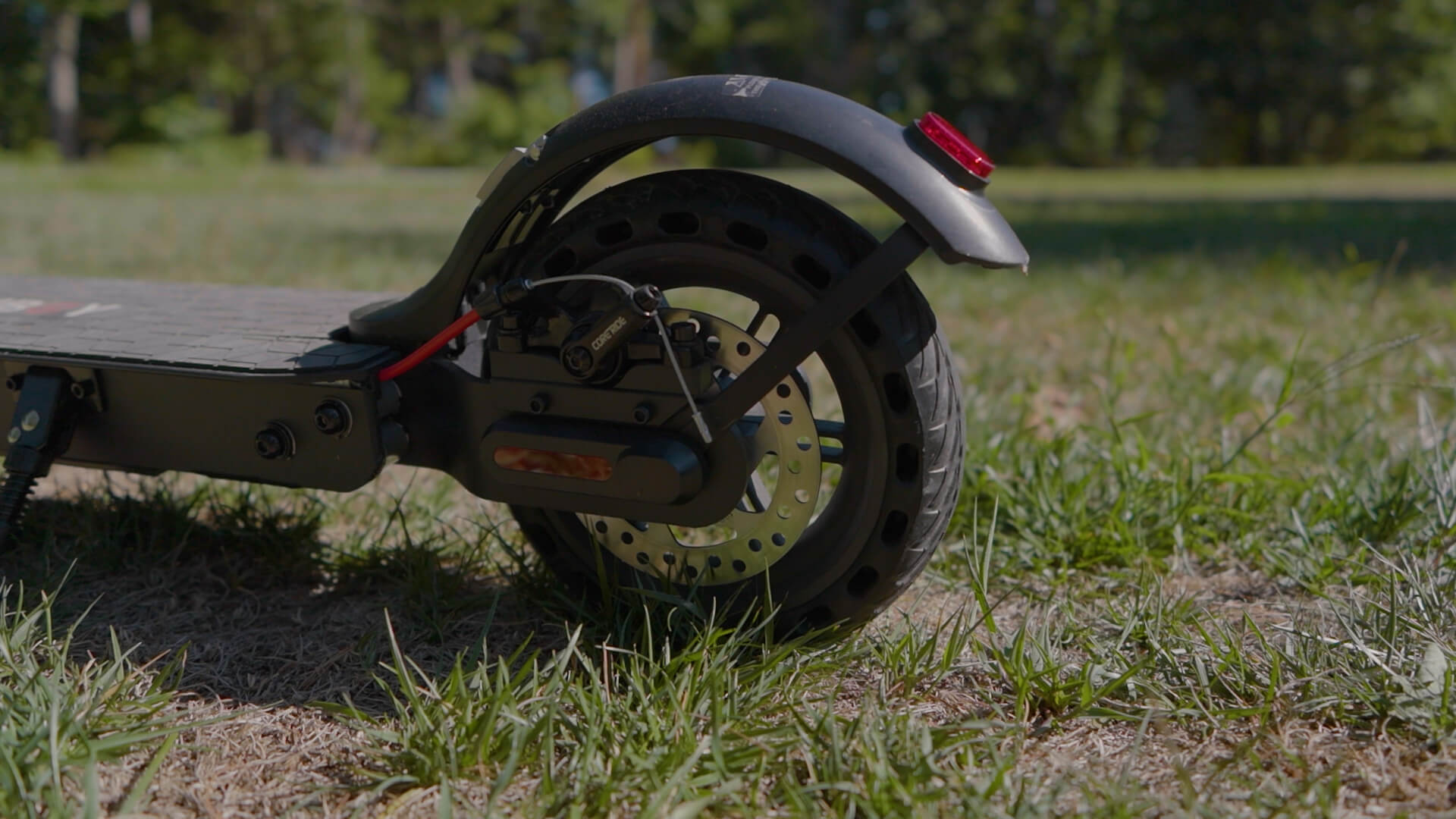Introduction
Electric scooters have eased our lives to a significant extent, especially when it comes to mobility in crowded places. Kudos to the electric scooter motor for smooth operation that provides power to the wheels to have enough force to move them. It is essential to understand your electric scooter motor as it determines various factors of your riding experience, such as top speed, acceleration, hill climbing ability, power consumption, and overall performance, to help you select a suitable electric scooter for a safe and joyous riding experience.
This guide will explore and cover the petty details and give relevant information on e-scooter motors to help you better understand their types, specifications, factors affecting their performance, and whether they impact your electric scooter's efficiency.
How Electric Scooter Motors Work
Electric scooter motors work differently according to their types. Usually, it operates by using the information the controller provides for efficient operations. The motor responds to the rider's input and directions through the controller. As the throttle on the scooter's handlebar is hit, the controller signals the motor to activate the motion. After that, the component will use energy from the battery to produce power and direct the wheels to move.
Two Types of Electric Scooter Motors
When buying an electric scooter, you can come across a range of Electric scooter motors, such as Hub motors, Chain-drive motors, Sensor/Sensorless BLDC motors, and Geared/Gearless Hub motors. These motors work differently to increase your e-scooter's efficiency and performance. Here are the two basic types of e-scooter motors: Brushless DC Motor and Brushed DC Motor.
Brushless DC Motors
Brushless DC motors or BLDC (or EC, i.e., Electrically Commutated) are introduced in the industry with modern technologies and simple operating mechanisms. Moreover, it does not use brushes or mechanical electromagnets to transfer current; instead, you can find a digital circuit here. The power alternates between the motor coils for efficient functioning.
A BLDC motor has a better power-to-weight ratio and is more energy efficient to operate silently. Moreover, it does not often overheat, so you can easily rely on it. Besides being durable and efficient, these motors perform better when compared to brushed ones. But on the contrary, they are more expensive and can cause power loss to some extent.
Brushed DC Motors
Brushed DC motors have been in existence since the early 1800s and are one of the oldest technologies to convert electric power to mechanical energy. These motors transport current through graphite/carbon brushes, so they are named after that only. A brushed DC motor produces power through two electromagnets, where one resembles an empty large cylinder, and the second one is within the cylinder to generate magnetic fields between the two. It is used to produce power to transfer to the wheels.
Though brushed DC motors have low construction cost, simple controller, and reduce the price of e-scooters, having an older technology, it wears out with time, and with prolonged use, it becomes hazardous. Additionally, today its production is limited.
Understanding Motor Specifications
When you opt for an electric scooter motor or motor controller, certain factors cause changes in its specifications. It is the properties of the motor that dictates what must be purchased. Usually, power & wattage and voltage & current determine a motor's specifications and performance.
Power and Wattage
Generally, adult electric scooters have a power level of 80 to 12,000 watts and determine the maximum scooter speed. The higher the power level, the greater will be the electric scooter motors' speed.
Commonly, standard commuting electric scooters range between a power of 200 Watts to 500 Watts and work well to have a speed of 25 to 40 kms/h. But heavy-duty e-scooters used for off-road driving and performance have dual motors, ranging between 1,200 and 3,000 watts.
|
Power Level |
Maximum Speed |
|
250 Watts |
25 kms/h or less |
|
350 Watts |
25 to 35 kms/h |
|
500 Watts |
40 to 60 kms/h |
|
1000 Watts |
50 kms/h or more |
Voltage and Current
Voltage determines the voltage the motor is rated to run at. For instance, scooter motors can be run at higher and lower voltages, but their performance changes once it deviates from the rated voltage. Typically higher voltages determine to extract more performance from the motor, but as a result, it shortens the lifespan of electric scooter motors.
Similarly, current measures the flow of electricity and is measured in amps (ampere hours). Motors draw heavy currents when they are first started (starting current). Then you can run the motor at the specified voltage for regular operation (rated current).
Can Motor Power Determine Electric Scooter Efficiency Directly?
Electric scooter motors can not be a factor in determining the E-scooters' efficiency and performance directly. Other factors must also be taken into consideration for a well-informed decision.
For instance, the motor's power and wattage determine only the component's power consumption. A motor with high energy produces more mechanical power resulting in a high wattage and faster acceleration, quicker moves, easier hill climbing, and will be capable of holding maximum weight. But you still cannot determine the scooter's efficiency.
Different scooters with similar wattages can have varied performances because of their efficiency and can result in different outputs despite consuming the same electric power. So the motor power will never give an accurate performance indication.
Factors Affecting Electric Scooter Motor Performance
Multiple factors affect the performance of electric scooter motors, such as battery capacity, motor power, weather conditions, tire type and pressure, and more. Let's delve into various factors that can affect the e-scooter's speed and motor performance and explore the elements that impact your electric scooter's velocity.
Weight and Load Capacity
The rider's weight can significantly affect the speed of the electric scooter motor. For instance, heavy riders can cause stress to the motor power and battery, causing them to work harder and resulting in slower speeds. On the contract, lightweight riders cause less strain on the battery and motor power and achieve higher speeds.
Terrain and Road Conditions
The chosen terrain type also considerably impacts the electric scooter motor performance and speed. Flat terrains like roads and smooth pavements enable the riders to ride their scooters smoothly and reach their maximum speed. On the contrary, riding on steep inclines and uneven surfaces slows down the scooter's speed, as, on such terrains, the motor and battery must work harder to maintain the momentum.
The Bottom Line
Electric scooters are a popular eco-friendly means of transportation, and their motor power determines the speed. The more powerful the motor, the more torque is generated to spin the wheels faster for higher speed. But your electric scooter speed can vary depending on several other factors too. Here we explored the insights into knowing the electric scooter motors better in terms of their types, specifications, aspects, and power in determining the efficiency of electric scooters. Now you know enough to make a well-informed decision regarding what to look for in an electric scooter motor when buying an electric scooter.











Share:
Legality of Pedal-Free E-Bikes in Canada: What You Need to Know
Protecting Your E-Bike : 7 Proven Tactics to Deter Theft